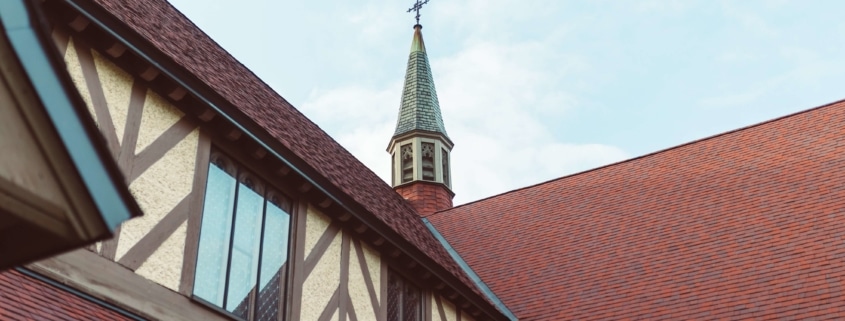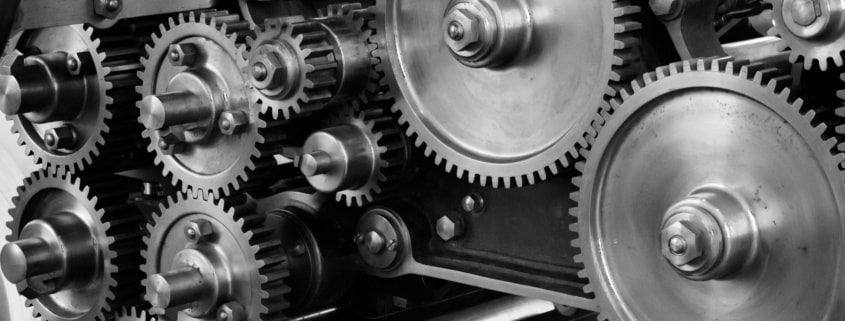It can be argued that copper makes for the most attractive of all metal roofing options, and stays unique because of how it changes color over time. The metallic sheen of new copper will eventually become a blue-green patina that is near impossible to replicate.
Copper is an option for those who are looking for a roof to have a longer lifespan as well as a unique look. Copper is a long-lasting industrial metal that can remain intact for hundreds of years with proper maintenance.
Learning the pros and cons of sustainable materials can educate home and business owners on new ways to save money while keeping their homes formidable in the housing market as well. This article will take you through all the advantages of using copper for roofing, as well as why not every building has a copper roof (yet.)
Copper Roofing: Benefits
Copper is a natural material that has been used for centuries in roofing and other architecture. Many gothic buildings and churches were roofed in copper and you can still visit some that are intact to this day.
With longevity and energy efficiency being top priorities when creating and designing buildings, copper roofing is becoming a popular metal roofing option for both industrial and domestic projects. Here are some of the major benefits of using copper for your next roofing job.
Lifelong Use
The biggest benefit you get from having a copper roof is its lifespan. Copper is considered a “lifetime” roofing option as you won’t have to replace it while you are living in your home and perhaps even after a few generations.
When properly installed, you will never have to replace it and simple maintenance will keep the patina looking amazing. No other roofing material can boast the longevity of copper, which gets better as it ages and stays just as durable and useful.
Durable
Being fireproof, and antimicrobial, it is no wonder this material is used in roofing and facades and is becoming more and more popular nowadays. On top of that, copper is lightweight, easy to install, incredibly durable, and cost-effective.
Asphalt roofing must be replaced every 12 to 18 years, but the structure and durability of copper roofing require very little maintenance once it is installed. This is because copper does not rust or corrode through oxidation.
It also does not require an additional coating and does not need to be repainted. Copper roofing is safer than other roofing materials and thus won’t become damaged through storms.
Lightweight
Copper is relatively lightweight, especially compared to other roofing materials like asphalt or shingles. This means there’s much less strain on your home’s structure when you use it.
Since it is lightweight and malleable, it can be formed to fit almost any house or building shape. Because of copper’s malleable nature, a professional with the proper tools can shape and mold it to fit even the most unique architectural features.
Great Aesthetic
Some of the most revered architecture in the world has copper in it. Medieval churches and buildings scattered through Europe show the gorgeous patina of copper throughout the ages and some of it is still standing hundreds of years later.
Copper can work with many types of architectural designs. From modern to classic structures, this roofing option is highly adaptable. Having a copper roof will definitely stand out in the neighborhood.
From its early days as a gorgeous metallic sheen to its slowly forming that gorgeous green patina we are all used to seeing on older structures, copper’s structure and form are timeless.
Eco-Friendly
Copper is one of the only materials that can be recycled repeatedly without seeing any loss of performance. It is 100% recyclable and that makes it incredibly eco-friendly.
Though it does need to be mined to be used, its recyclability makes it great for those who want to be environmentally aware. Copper wiring, pipes, fixtures, and even old roofs can be recycled and reused over and over.
Copper Roofing: Disadvantages
The biggest issue for someone with using copper roofing is the price of materials. On average, a copper installation can cost more than twice as much as a standard asphalt roof.
The high price of getting a copper roof makes it hard for many homeowners to afford to use it, but when looking at the long-term benefits of a copper roof it can be a worthwhile investment. Though you pay more at the start, a copper roof can cut down costs for many years.
Ask the Building Material Specialists at MetalTech About Copper Today
MetalTech Global is the nation’s premier distributor and fabricator of coil, sheet, and finished architectural metals products. Working with our affiliates, we are promoting the use of sustainable metal products in building.
We envision that home and commercial construction will be committed to using only durable and reusable products. MetalTech Global can help your commitment be successful as durability, reusability, and sustainability is our area of expertise. We work with companies like elZinc America, VMZinc, Lorin Industries, and all major Copper mills to provide the highest quality architectural products in natural metals.
Contact us today for information on architectural metals, coils, panels, metal fabrication and cutting, folding, and more. We look forward to being a part of your next successful project!



